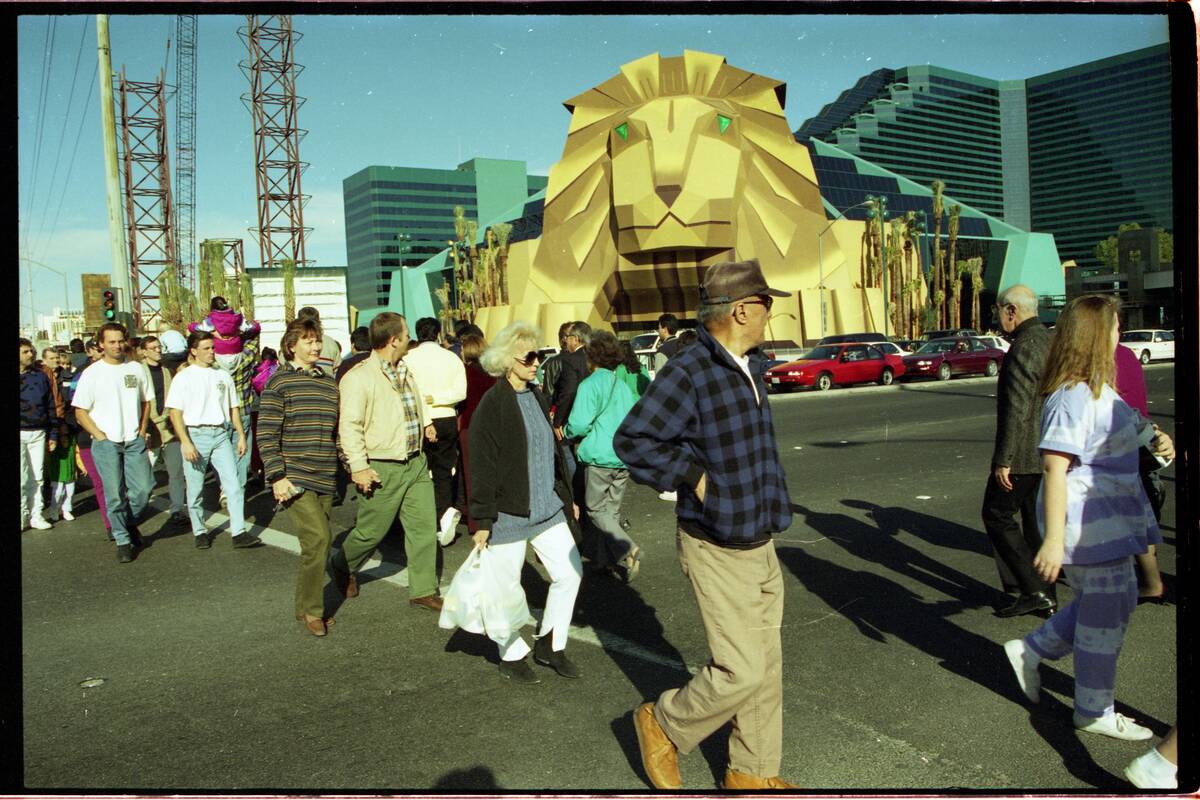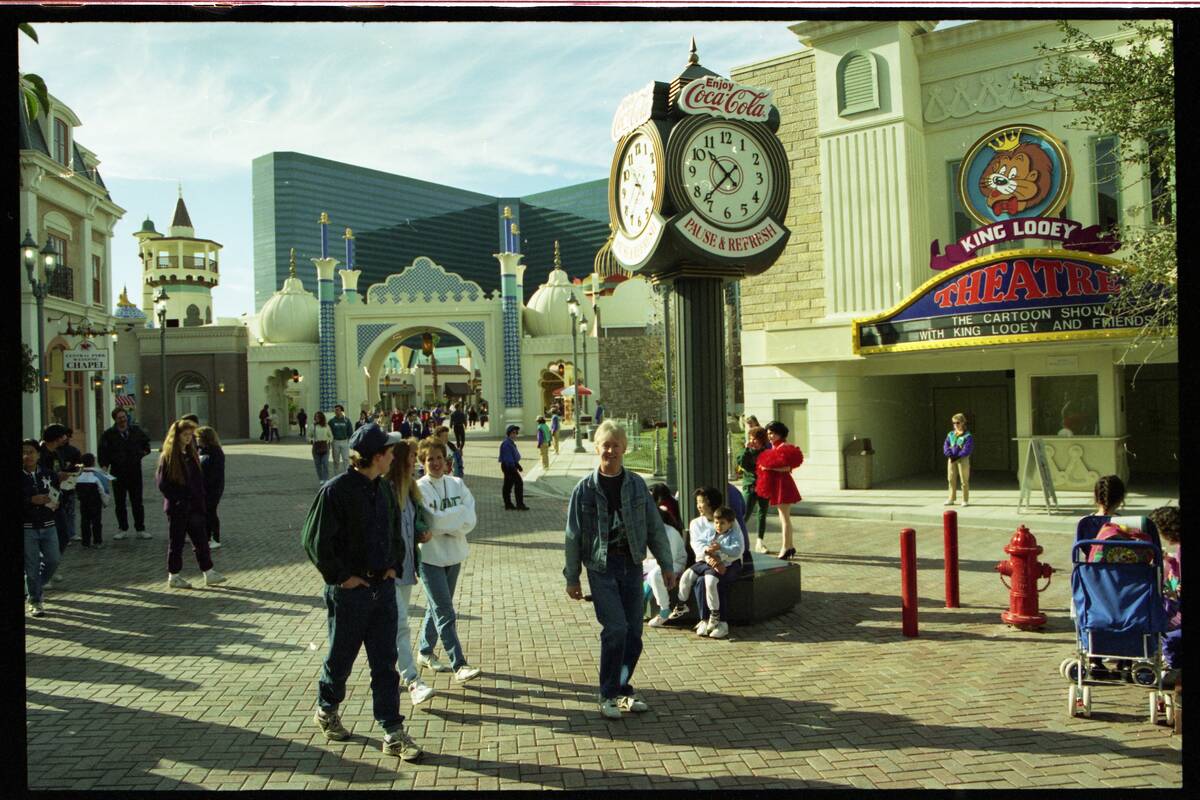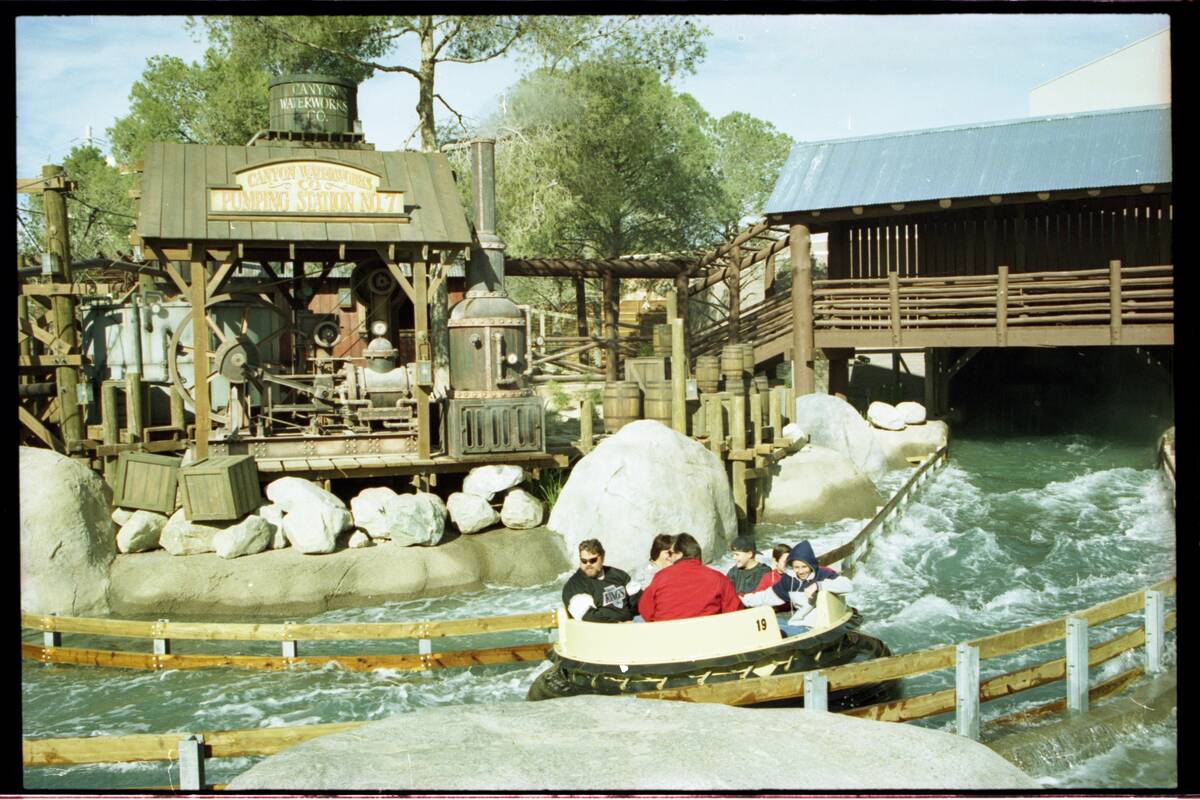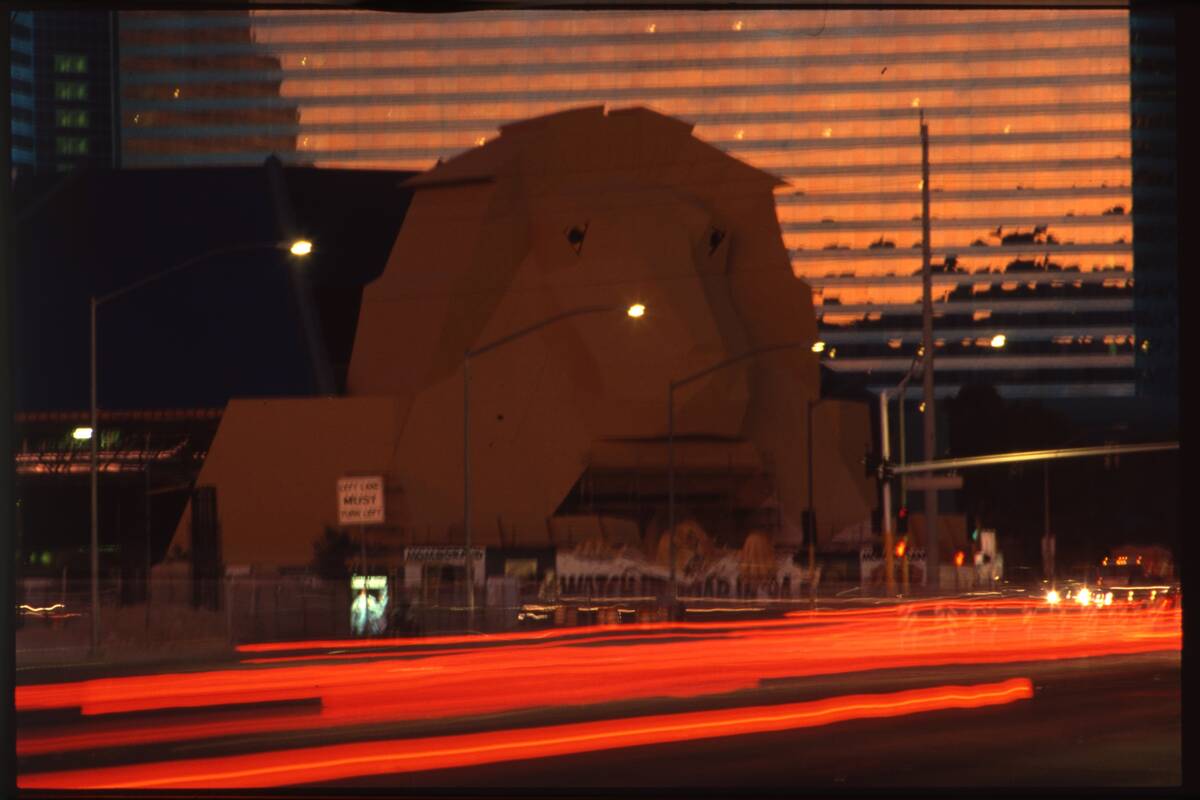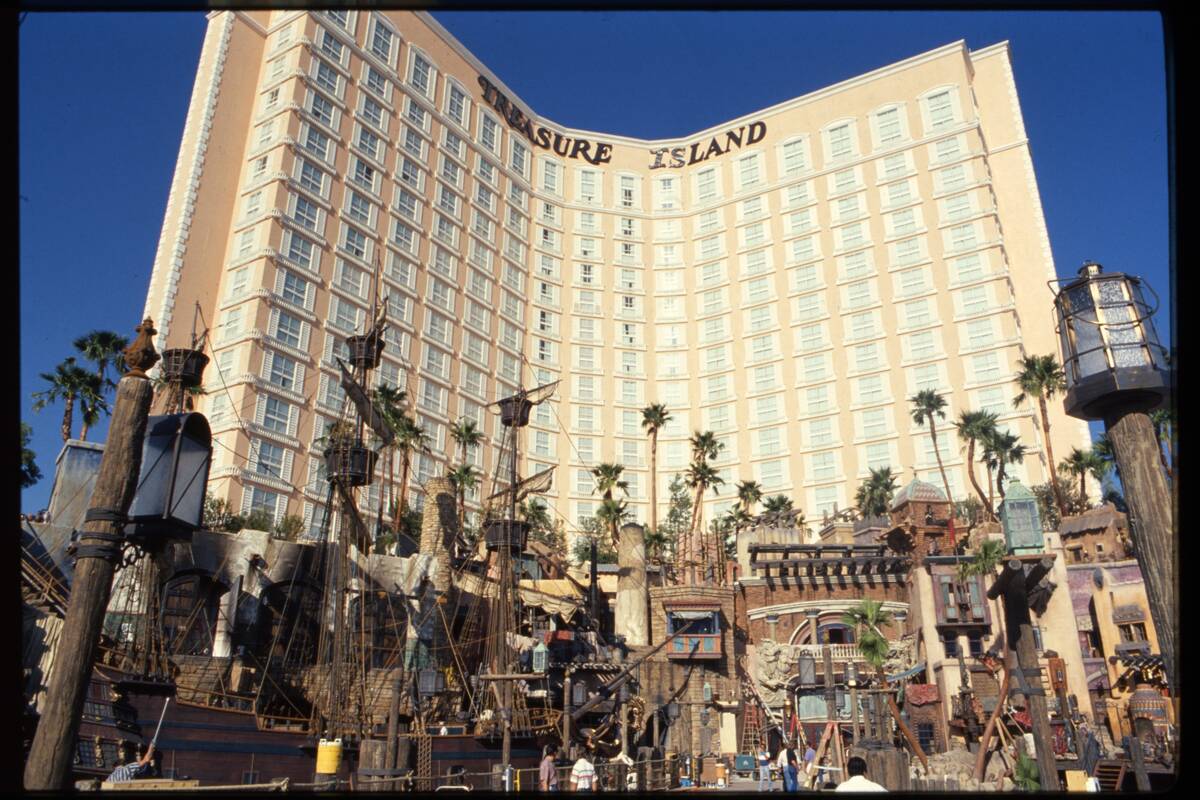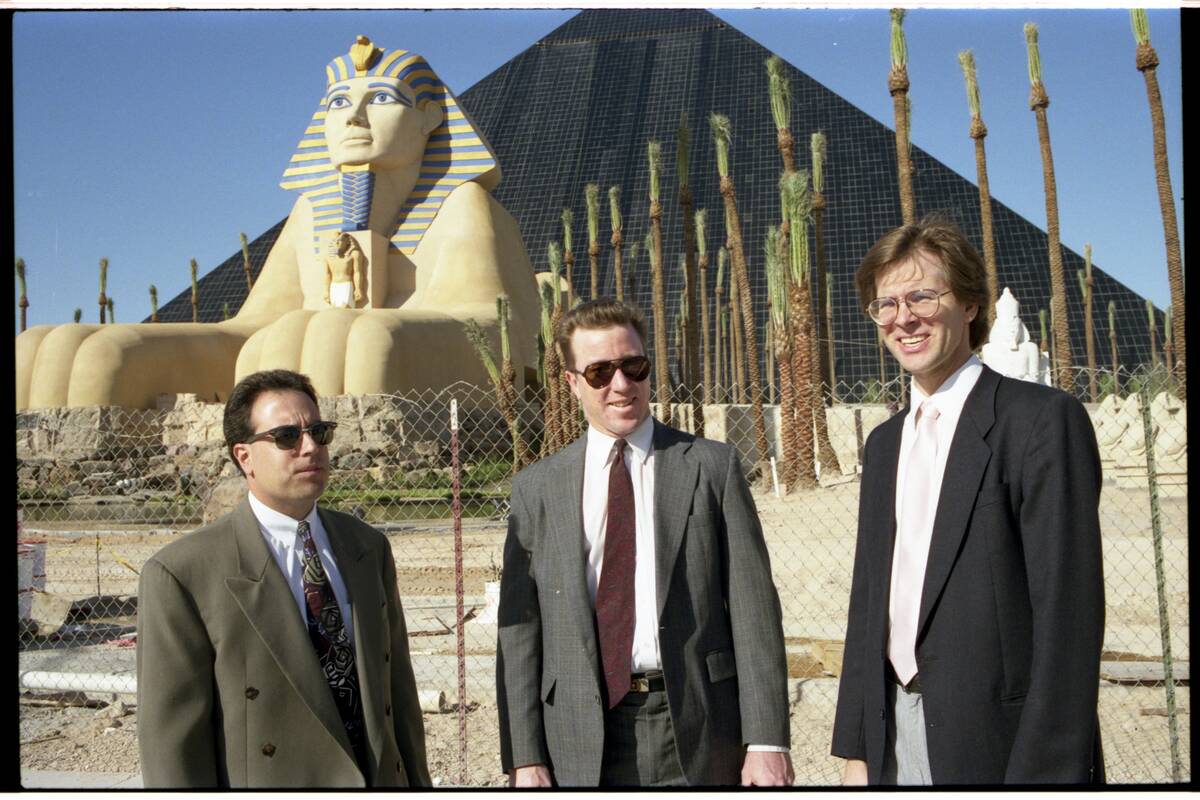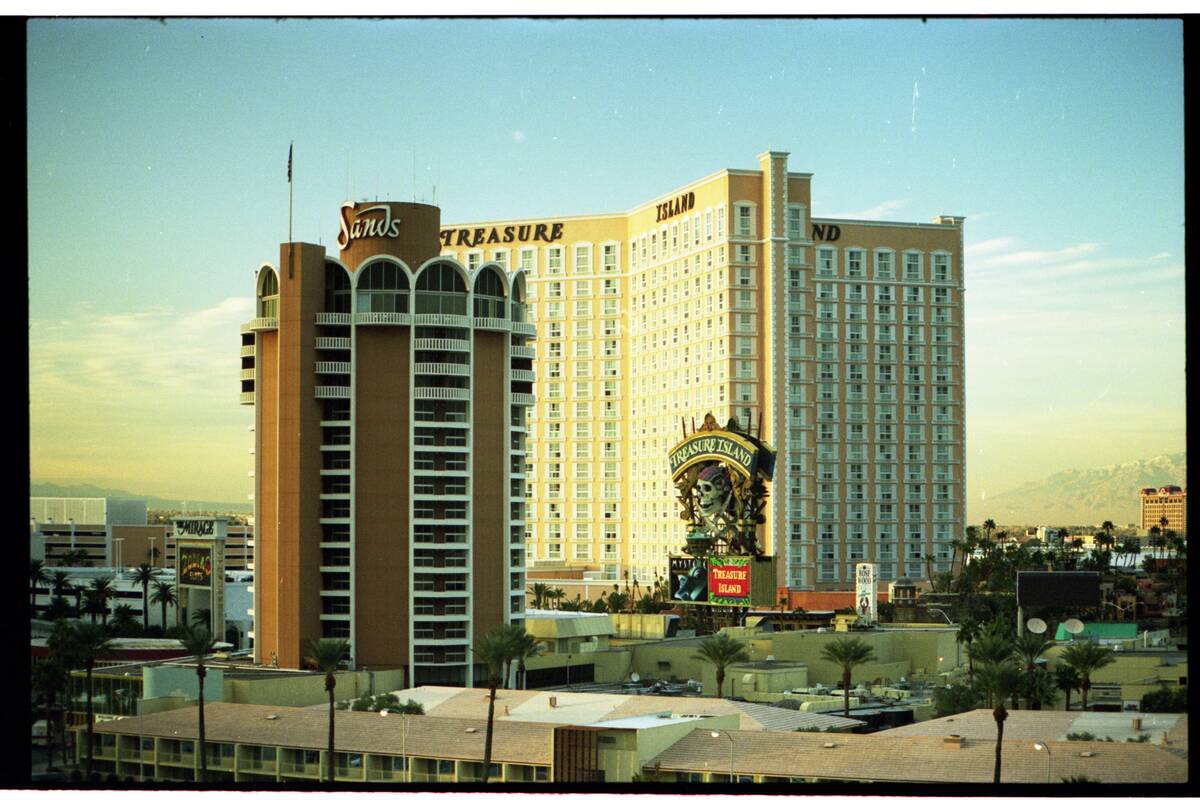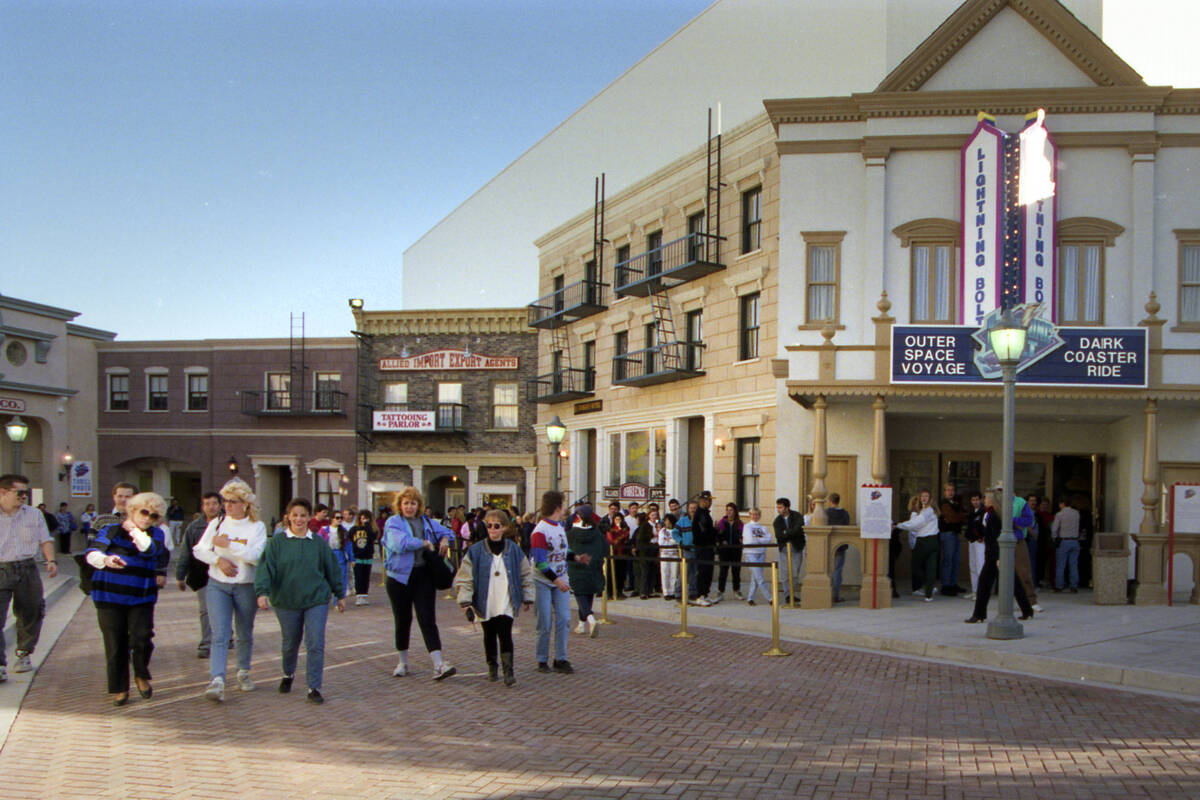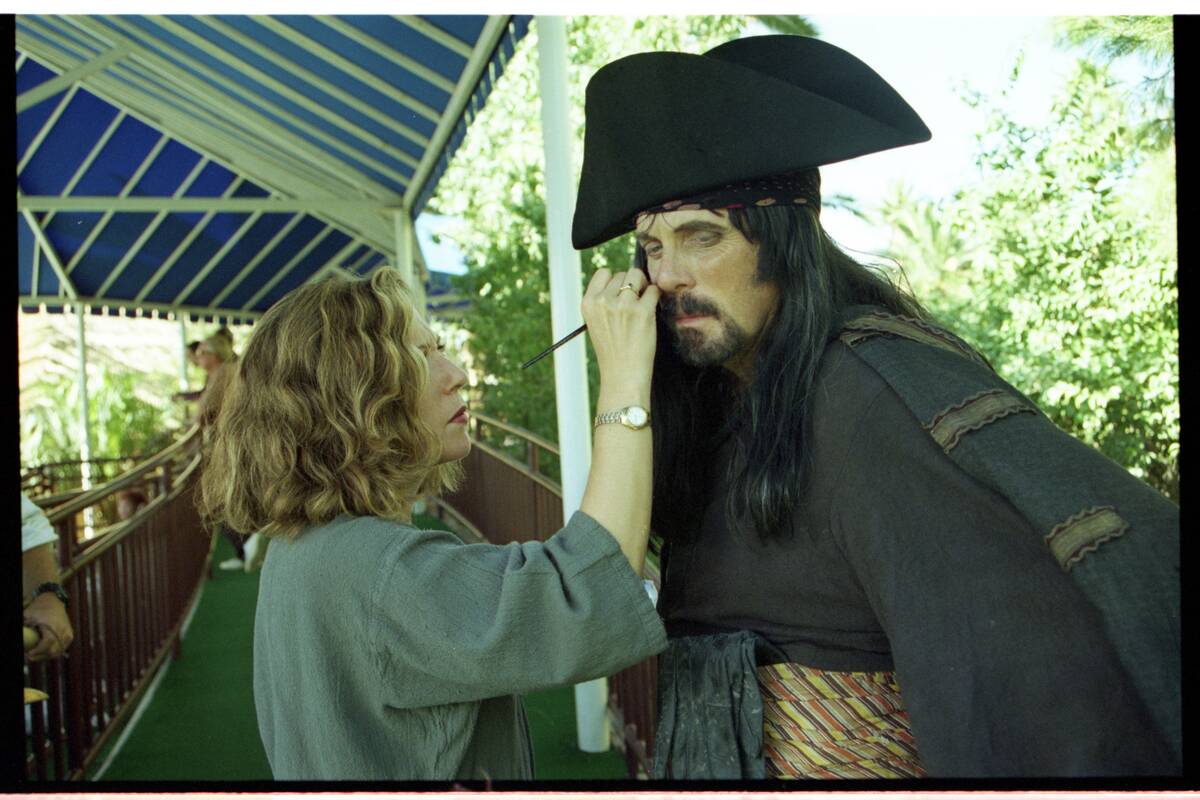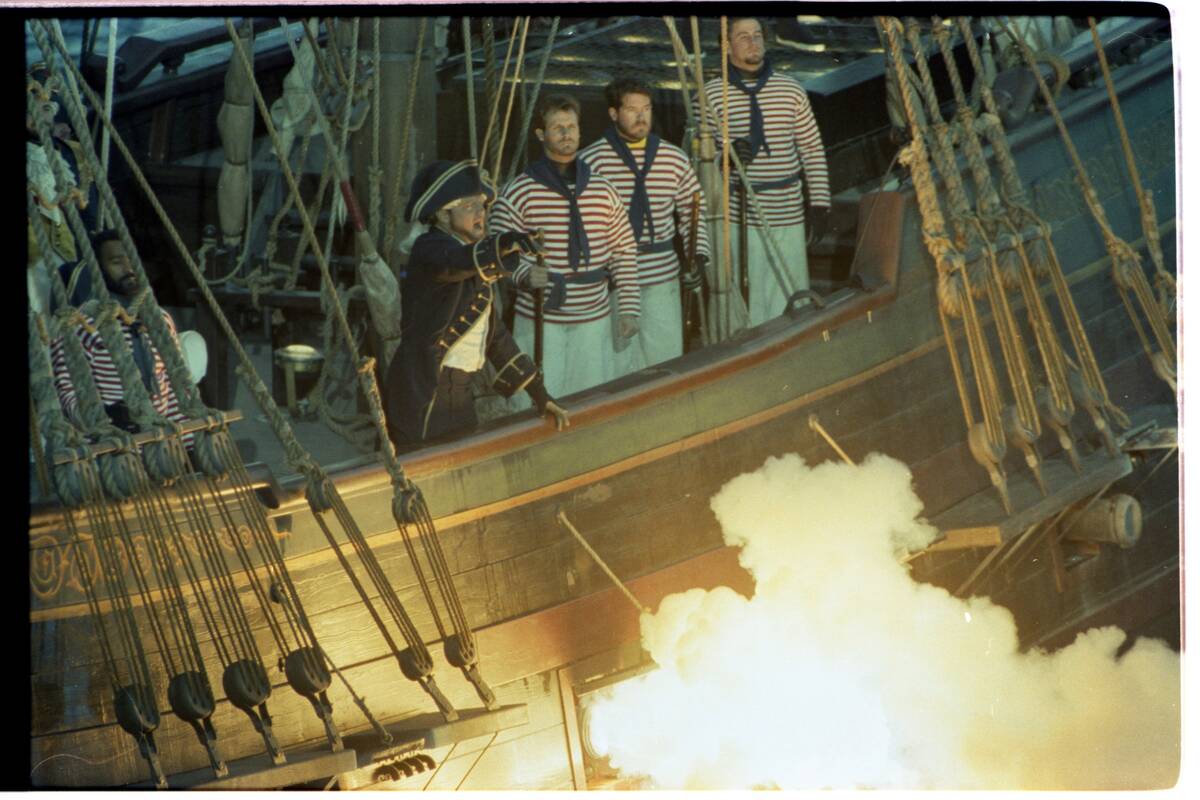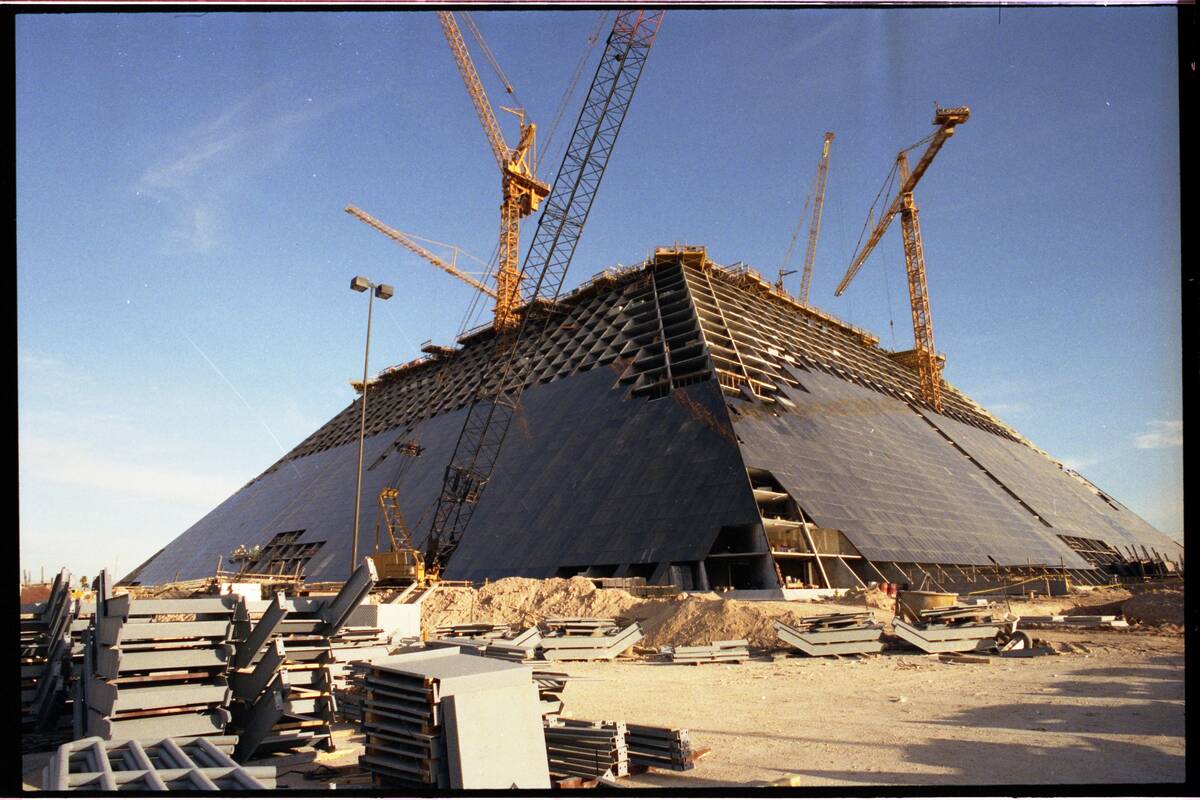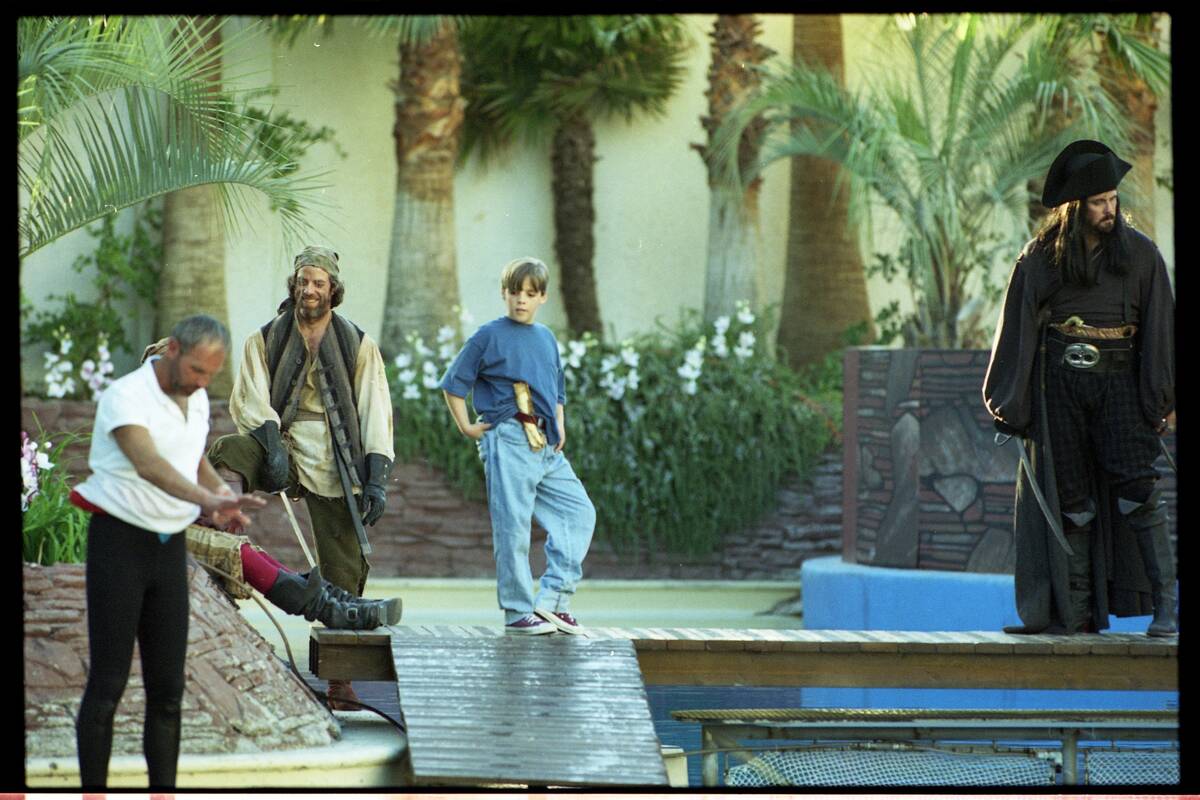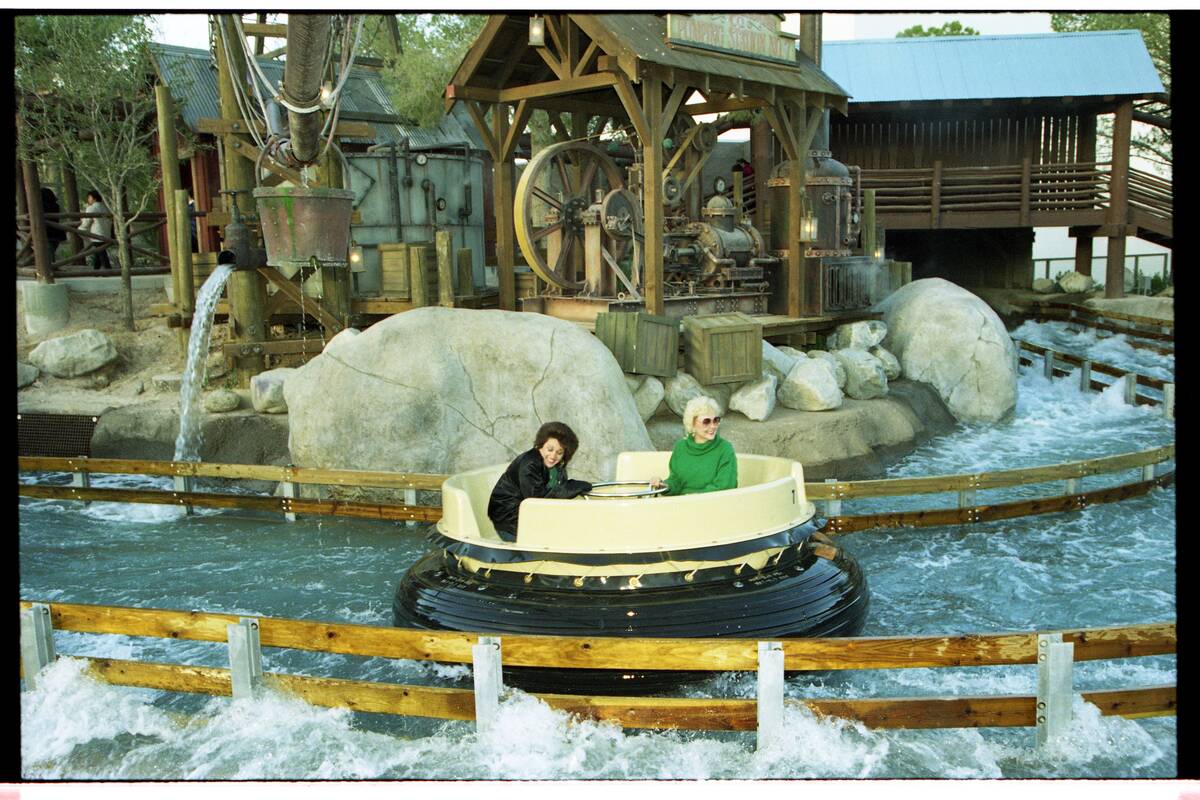30 years ago, pirates, theme parks and a pyramid ushered in a new Strip
Three decades ago, the Strip had a few new additions to its skyline: a pyramid, a pirate ship and a theme park on the land of Oz.
Three new megaresorts opened their doors on the Strip in the last three months of 1993. Then-Circus Circus Enterprises opened the Luxor on Oct. 15. Not two weeks later, Steve Wynn’s Mirage Resorts opened Treasure Island to a big boom. And by the end of the year, Kirk Kerkorian’s MGM Grand Inc. opened its eponymous, record-breaking hotel-casino on Dec. 18.
Each of the developments were part of a pivotal time for the Strip. Megaresort predecessors The Mirage and Excalibur opened several years earlier and proved to casino moguls that an attraction-based concept would bring a new crowd to Las Vegas.
“Now we’re seeing the signs of Las Vegas going from a gambling place with a number of tourist attractions to a tourism place with a lot of attractions that include gambling,” said Michael Green, a historian at University of Nevada, Las Vegas.
Ushering in a new kind of resort
The expansion of family-friendly attractions led to a quick boom in visitation. In 1992, Vegas had 21.8 million visitors to the region and a hotel room inventory of about 76,500 rooms. By the end of 1994, 28.2 million visitors came to Las Vegas and stayed in the 88,500 rooms available to them – a 28.9 percent increase in visitation over two years, according to historical data from the Las Vegas Convention and Visitors Authority.
The only thing that could stop that growth trend was the Great Recession.
Alan Feldman, a former gaming executive with Mirage Resorts and eventually MGM Resorts International, was part of the team that opened Treasure Island in fall 1993. He recalled a study done in the late 1980s that found that about 15 percent of people who had traveled in the past year had gone to Vegas. Gaming executives saw a massively underserved market, and sought to change that with attractions, entertainment options and some family-friendly marketing.
“I think we had begun to sense that the market really was as untapped as we had thought when we opened up The Mirage,” Feldman said.
The resorts all positioned themselves differently at their opening. Feldman said the companies didn’t necessarily see direct competition because of this.
MGM Grand opened as the largest hotel in the world with 5,000 hotel rooms. Its theme was inspired by one of the movie company’s most popular titles, “Wizard of Oz,” and held the 33-acre, eight-ride MGM Grand Adventures theme park on the property.
North of the Grand a few weeks before, Wynn’s Treasure Island opened with a free pirate show, convention space and the eventual addition of the first Cirque du Soleil show, Mystere. And roughly 10 days before that, Circus Circus Enterprises targeted the baby boomer clientele with its Egyptian-themed Luxor resort. The resort was meant to set itself apart from the company’s two other, value-targeted casinos at Excalibur and Circus Circus. It was the first in their portfolio to offer gambling credit to customers.
“It was a transitional time, but part of that transition is what already happened,” Green said. “If The Mirage and Excalibur had been failures, would we have seen this significant amount of construction and major resorts within three to four years? Certainly not.”
Family-friendly marketing
The addition of megaresorts with these attractions grabbed baby boomers, the generation who now had families and were attracted to the value Vegas brought for multiple travelers. And with baby boomers having children, they needed something to do while gambling, Green said.
Still, it wasn’t a push to get children to Las Vegas, unless their parents were taking them there.
“I think we tend to understand and overstate the discussion of family,” Green said.
Feldman said that original intent for Treasure Island was to highlight the wondrous, kid-like feeling associated with a pirate adventure. But Mirage executives, too, got swept away in the marketing magic.
It started when the company wanted to tie its implosion of the Dunes hotel – where the Bellagio now sits – to a theatrical cannon blast at the opening of Treasure Island. They heard that film executives would pay to implode a building, Feldman said. When that didn’t pan out, the Mirage team decided to do a TV movie of their own.
The 1994 special aired on NBC, “Treasure Island: The Adventure Begins,” and followed a boy’s pirate-filled adventure at the resort while on family vacation in Las Vegas.
“I wish we could take the TV show back. I wish we could get a do-over on that because it seemed to be agreeing and promoting” a family-friendly concept, Feldman said. “It was probably the opposite of the messages we really wanted to send about the opening of this new property.”
Impact today
The Treasure Island team, and likely others on the Strip, quickly faced the unintended consequences of colocated, all-aged attractions and casinos.
“(There were) many, many, many instances of parents taking their kids to a machine, sitting them on the chair and telling them to hit the button,” Feldman said. “That had to be stopped.”
Despite the challenges, people kept coming and the Strip exploded with growth through the rest of the decade. Eight resort-casinos were built by 2000 – room inventory grew to 124,270 or two-thirds of the city’s 1990 amount, according to LVCVA historical records.
The turn of the century rang in a new push in Vegas to move away from a family-friendly perception. MGM Grand closed its theme park and turned the land into The Signature, a condominium project, in 2000. That year, MGM Grand Inc. acquired Mirage Resorts and by 2003 the new company scaled back the pirate theme to draw adults in – the same year that Vegas’ most successful marketing campaign, “What happens here, stays here,” first aired.
Phil Ruffin, the current owner of Treasure Island who acquired the site in 2009, said the impact of the 1990s can still be felt today. Look no further than some preliminary plans at the property to bring back entertainment along Las Vegas Boulevard, like the pirate show of years past.
Ruffin said his team is considering hologram or animatronic options to provide another pirate show.
“Since they’re gonna shut down (The Mirage) volcano, this will be something to see, and it’s free,” he said in an interview.
Ruffin said the actions of the Strip then are similar to modern development. Hospitality executives finding new development opportunities and ways to reinvent visitation marketing campaigns.
“It keeps changing and keeps changing,” Ruffin said. “Now the north end – there was like $8 billion spent on the north end with the opening of the Resorts World and now with the opening of the Fontainebleau, it’s good to see the North Strip coming back alive.”
McKenna Ross is a corps member with Report for America, a national service program that places journalists into local newsrooms. Contact her at mross@reviewjournal.com. Follow @mckenna_ross_ on X.



